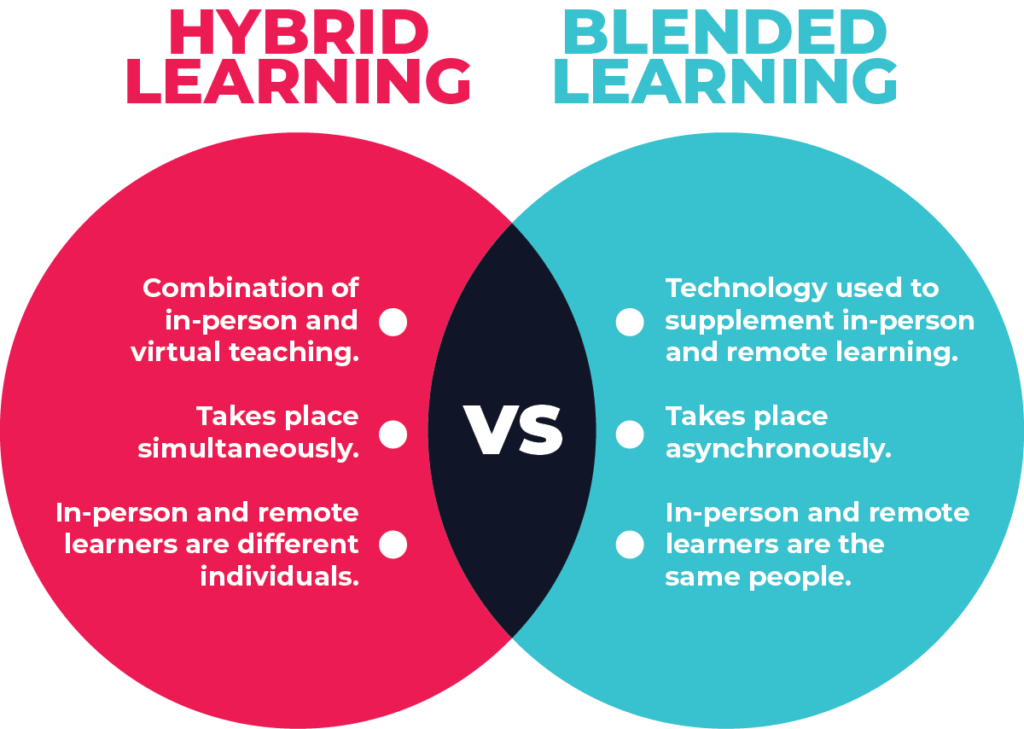The pandemic drove organizations, to consider strategies to keep employees productive.
According to an Accenture study, up to 83% of employees believe that a hybrid work model is the greatest way of achieving a physical presence merely for a few days a week. There are pros and cons to everything, so we thought we would ask our experts Andrew Jacobs (LLARN), Serena Gonsalvez- Fersch(SoftwareONE), and Kasturi Das(Whatfix) about how Hybrid Learning is building its inroads into corporate training.
Hybrid learning isn’t just blended learning. Blended learning is a form of hybrid learning. It was done on purpose. You decide to approach hybrid the same way you do face-to-face training when you develop blended learning. Learning as a broad activity is a subset of in. For a few reasons, I believe we misunderstand and misinterpret hybrid learning. First of all, how does a hybrid work? I believe we will have trouble locating hybrid learning if we are unable to describe what hybrid working is. And thinking that hybrid work is simply about the place is one of the problems with it.
It is much more than a mere place. Our work schedules and the kind of jobs we create are to blame. Therefore, to claim that hybrid learning is simply integrating something is a little more complex, in my opinion. And then you add all the thinking around how we work, how we learn, and the channels that we’ve got available. I think it’s, it is more complex than maybe we would like to think it is.

Time and availability are the first points I’d make. What happens with a hybrid that doesn’t always happen with blended learning, is the merging of what we term synchronous and asynchronous learning, or the ability to access offline content, on-demand in addition to what is happening in front of you in real-time also virtual at the same time. When we speak of blended learning, it always follows a linear pattern. Even though there was a blend of different elements, they were mostly linear. Even when they weren’t linear, they nevertheless followed some kind of pattern, be it a cycle of connected-dot puzzles or something else. I think what makes hybrid different is that if you think about a car, a hybrid vehicle seamlessly transitions from electric to electric and battery to gasoline and gas without the learner or passenger necessarily being aware of it. The fact that more of it is happening simultaneously, in my opinion, is what makes hybrid learning distinct today.
In terms of blending, what we’ve done in the past, we do face-to-face methodology, and we do a little bit of e-learning and we’ve made that self-directed. So people can pick and choose what they want to do when they want to do it. If we want to go down a Hybrid learning route, that’s much more about people taking responsibility. And that’s more about self-determination. So we need to think very differently in terms of what we design, how we design, and the channels we’re going to be delivering it. So the pedagogies that we’ve used in the past aren’t going to work, it’s not going to be about instructional design anymore.
Primarily, there are four variables, with skill being the first. So the real question is whether or not people have the necessary skills to comprehend, create, and deliver hybrid learning are people skilled enough to be able to understand, design, and deliver hybrid learning? We need to educate the organization that hybrid is something different
Secondly, it’s the will, which is the motivation to want to do things differently. Taking up the initiative to try out different things adhering to the changing learning ecosystem
Thirdly, the authority to do things differently. There are two forms of authority. The first is hierarchical authority. The authority to be in the business and the responsibility to be able to make some accountable decisions about the learning platforms and so on. Secondly, social authority is the ability to create influence. To be able to help people understand that this is the way things will need to be done in the future.
The fourth important factor is resources. Organizations must be aware of the available resources and how to maximize their use. More content is not necessary. Though the content is king, content is the kingdom. It has to do with the setting in which they work and the material used. Instead of designing something fresh instead; combine 16 items from other sources for assistance and support. Repurpose the content into smaller chunks and make sure it’s utilized. If you don’t want to create more content, make sure the content you already have is consumed well.
Author
Andrew Jacobs is Learning Principal for Llarn Learning. Known for innovative thinking about learning, training and technology, Andrew has significant experience in a range of roles across learning, training, talent and people development. He is a Fellow of the Learning Performance Institute (LPI) and a CIPD Leader in Learning. He blogs daily at www.lostanddesperate.com and produces the podcast Women Talking About Learning.
Copyright © 2025 Whatfix. All rights reserved
This website is owned and operated by Whatfix Private Limited (Formerly known as Quicko Technosoft Labs Private Limited)